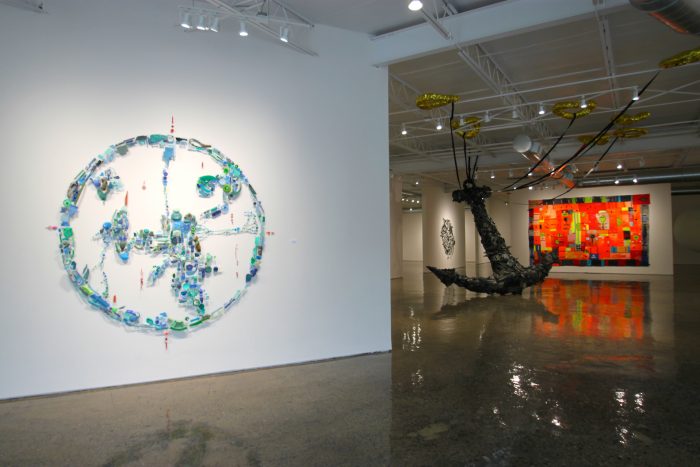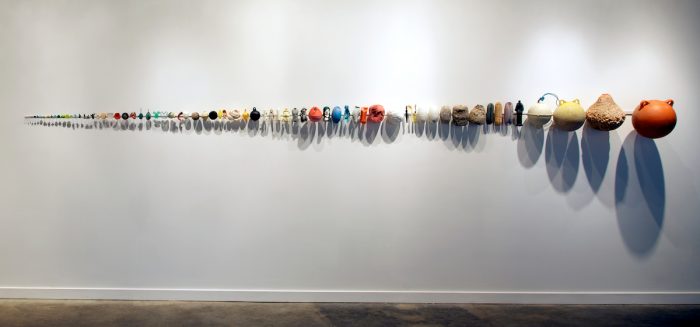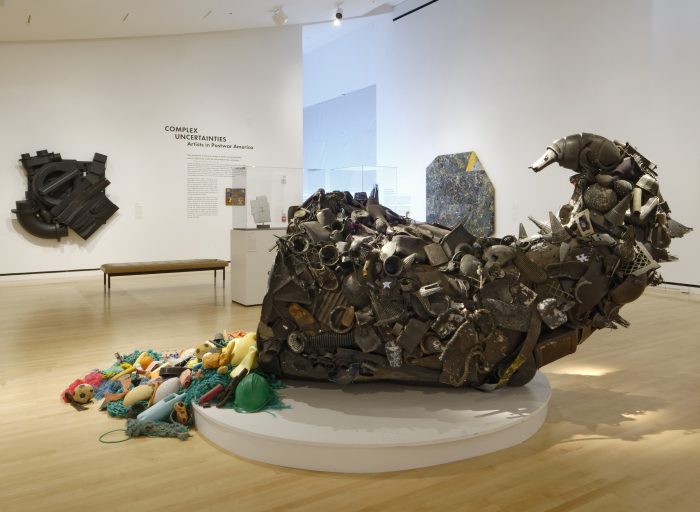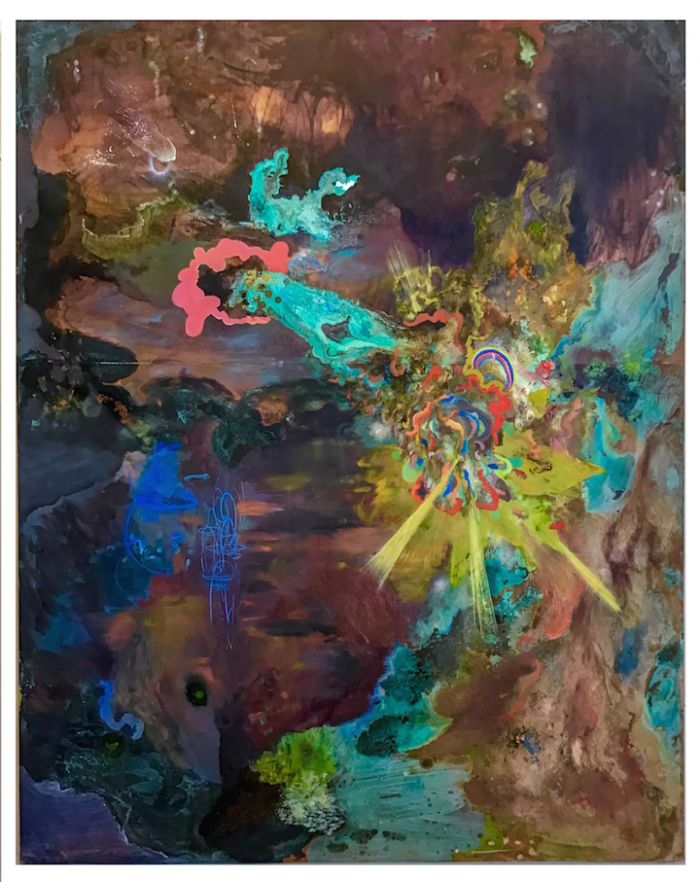Few creators are the embodiment of a multidisciplinary artist quite like culture-worker, activist, and researcher, Pam Longobardi. Through the Drifters Project , her work begins as a direct intervention on behalf of our oceans and culminates in large sculptural pieces that protest selfish production cycles and the careless abandonment of waste. The Drifters Project was founded by Longobardi in 2006 after she witnessed the mountains of plastic on the remote Hawaiian shore of the Big Island South Point. Now a global collaborative entity, the creative enterprise has removed tens of thousands of pounds of debris from natural environments and relocated those materials into social spaces. Longobardi is also a practicing abstract painter who often uses the subtleties of form and color to engage with the emotional nuances of climate change.
As the winner of the prestigious Hudgens Prize and a Distinguished Professor at Georgia State University, Longobardi has appeared in the pages of National Geographic , Sierra Magazine , as well as on the Weather Channel. Her thought-provoking work has also been featured in exhibitions, galleries, museums, and public spaces around the world.
-

Re-Worlding
Your work for the
Drifters Project
is founded on your ideology of the Conscious Ocean; “
the assumption that the ocean is a conscious entity that, in many different ways, from rising levels and temperatures to declining fish stocks to coral bleaching, and finally to the deformed material plastic objects that float the world round, is attempting to communicate its declining state of being.” How exactly do you think the ocean is conscious?
I believe there is a general intelligence in nature itself and the ocean, as the place where life on earth began, which might embody the ultimate creative consciousness. There is much to be learned by appreciating the non-human world as a vast intelligent life-force, far more ancient than ourselves. If we view this dramatic alteration of the physical world as mere side effects of our desire to take, own, build, and use, then we have forever diminished other life in pursuit of our fulfillment. No other creature knowingly does this.
-

Anthropocene One: Supern ature
How does the process of collecting ocean trash influence the sculptures and installations you create through the Drifters Project?
My art extends beyond physical art pieces, to include the interactions I have with the people, places, and creatures of specific sites around the world. The sculptures and installations are stand-in actors for the work that happens on site. In the public space, there is always a performative aspect, in the form of an actual performance piece, person-to-person engagement, or public discourse. Additionally, with my work on the Greek island of Lesvos, my art pieces have been able to generate direct aid for refugees and for the citizens that run a social enterprise that’s laying the groundwork for a new future for the island.
-

Economies of Scale
-

Complex Uncertainties
Do your abstract paintings and drawings belong to the same universe as your ocean-centric sculptures?
I view the paintings as an antidote to the plastic work, but still wholly part of the
Drifters Project
. They are visualizations of vast forces of collision between natural processes (such as chemical patination of copper) and industrial human-made products (like plastics, acrylics, resin, and oils) that are happening around the world, all shrunken to the manageable scale of a painting space. Through these works, I’m able to control the outcome and nature always comes out on top: the sun will come out, rainbows will form, and there will be another day. This practice helps me manage my emotionally and physically difficult work with plastic.
-

Eremocene Two: Spark
Finally, how do you understand the language of abstraction and how does this connect with your campaign to preserve our oceans?
Through abstraction, I collaborate with the energies of nature. When I begin, the patinas and paints are poured, mixed, and flung together to battle across the copper surfaces. Then I leave for a few days as the patinas cure and the paint dries. When I return, I begin the slower process of finding a place of beauty and a paradise of living energy.
Through this process, I explore the real and the imaginary. My Drifters work is so firmly situated in the
real
in every aspect: it’s a real disaster, there’s real suffering in the human and animal world, it’s a real challenge to keep the activist fight going when you’re up against something as massive and soulless as the plastic economy. Through the act of painting, I find hope and comfort by engaging with the imaginary.
The paintings also directly aid in the preservation of the oceans because they continue the narrative of my concerns and the sale of them directly funds my expeditions and cleanup projects.
Through our bi-weekly articles, we at Oceanic hope to inspire individuals to find their own way of engaging with the climate crisis by merging their passions and skills. To learn more about how Longobardi is continuing this work, explore her platforms below or head over to the Drifters Project .
If you live in New York, you also have the chance to see her work in person this month at
Anthropocene in LES Gallery,
an exhibition exploring “the vast environmental and geopolitical forces re-ordering the
world as we have known it through the traceable singularity that is plastic.”
Websites: driftersproject.net , pamlongobardi.com , plasticfreeisland.com
Instagram: @driftersproject
Facebook:
Ocean People
,
Drifters Project
Author: Carola Dixon
Editor: Dena Silver
Instagram: @driftersproject
Facebook:
Ocean People
,
Drifters Project
Author: Carola Dixon
Editor: Dena Silver


